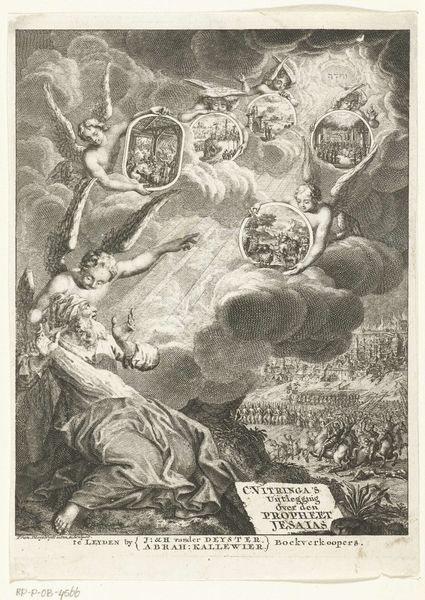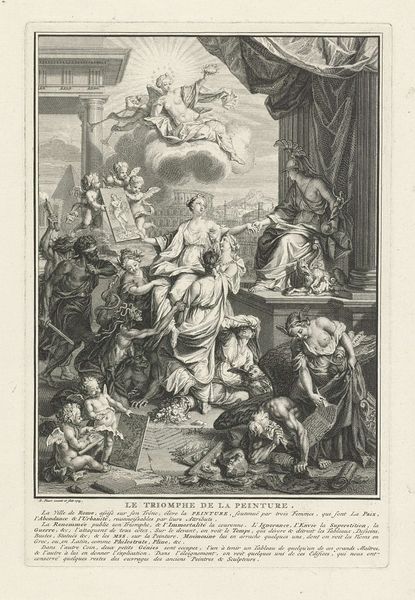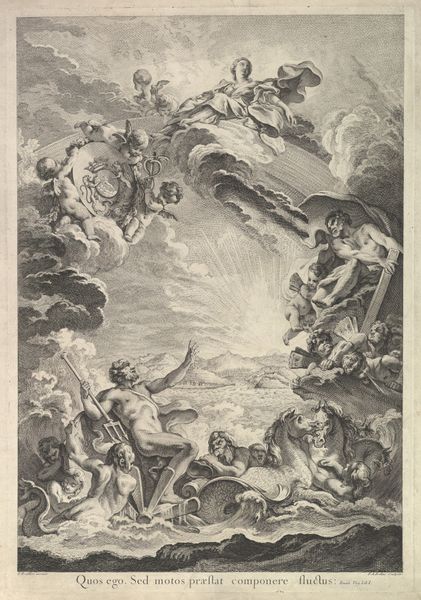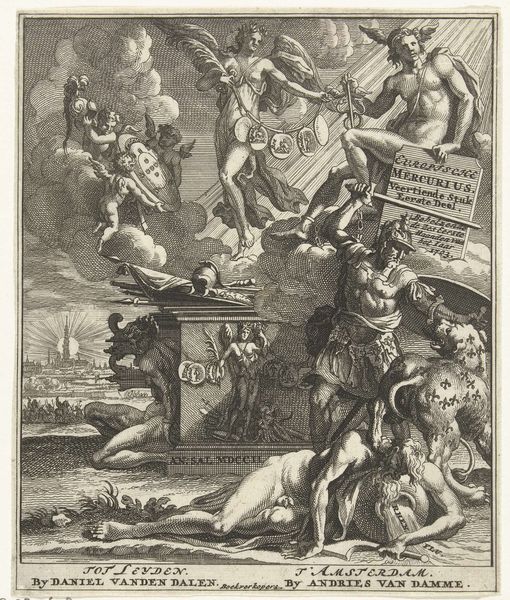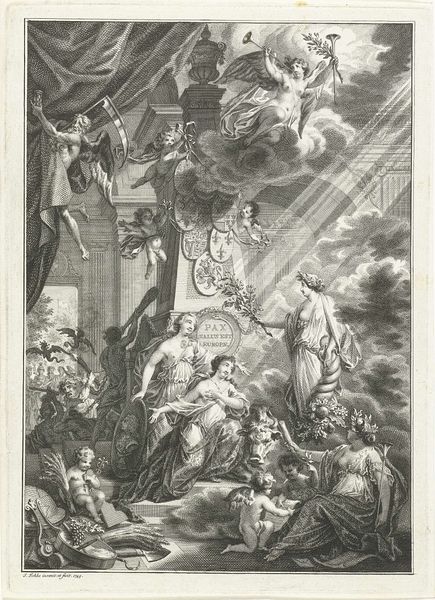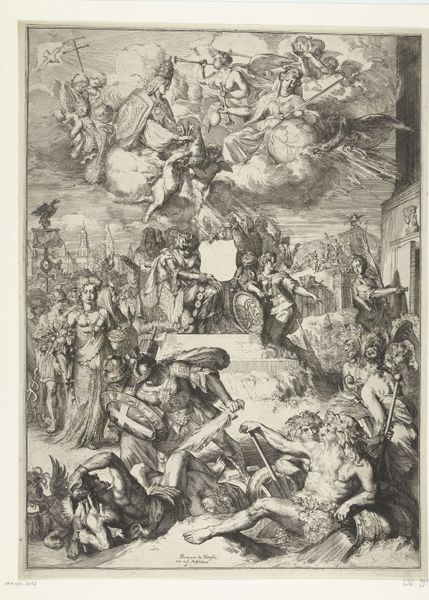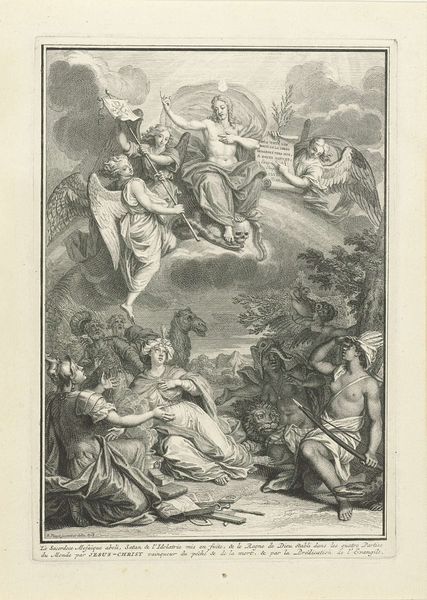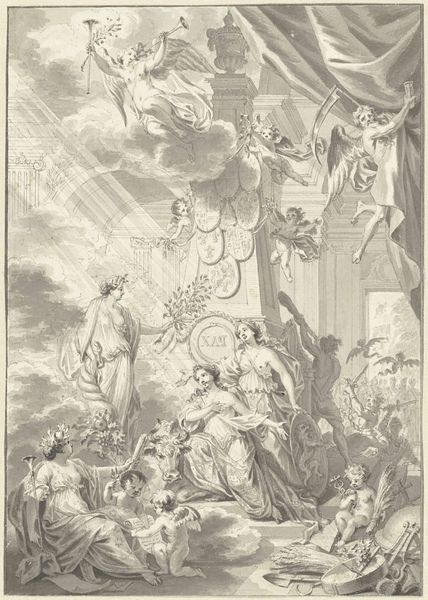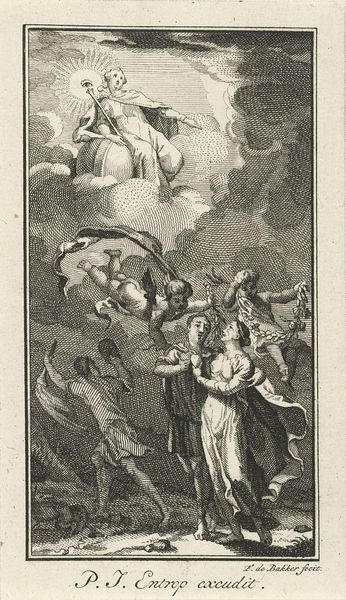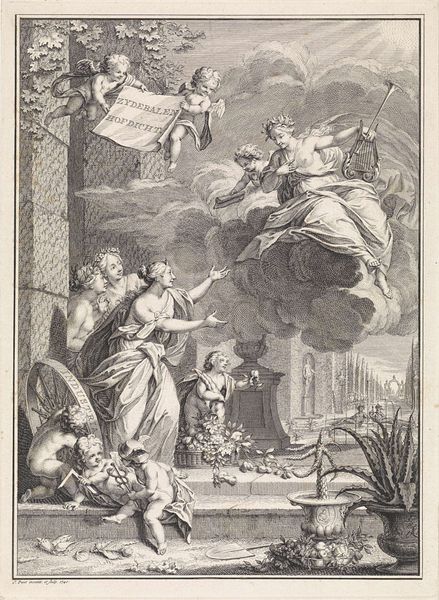
Allegorie op geboorte van Willem III, prins van Oranje-Nassau in 1650 1650
0:00
0:00
cornelisvandaleni
Rijksmuseum
print, engraving
#
portrait
#
allegory
#
baroque
# print
#
figuration
#
line
#
history-painting
#
engraving
Dimensions: height 646 mm, width 446 mm
Copyright: Rijks Museum: Open Domain
Editor: So, this print is titled "Allegory on the Birth of Willem III, Prince of Orange-Nassau in 1650" created by Cornelis van Dalen I. It’s an engraving, so line-based. It’s overwhelmingly Baroque with all these cherubs floating around. What really jumps out at me is the contrast between the detailed rendering of the figures and the more atmospheric rendering of the sky. What do you make of it? Curator: It’s crucial to see this not just as an image, but as a mass-produced object intended for wide circulation. Engravings like this were commodities, weren't they? They disseminated political ideology and solidified the power of the ruling class. How do you think the materials and production method here shaped its meaning? Editor: Well, the choice of an engraving suggests reproducibility. It made the image accessible to a broader audience, promoting a specific narrative of legitimacy and divine right tied to Willem III’s birth. So the *how* it was made really impacted *who* saw it, and therefore *what* it meant. Curator: Exactly. Consider the labor involved – the engraver's skill in translating imagery into reproducible lines, the printing process itself, and then distribution. These material processes served a social function – bolstering the power of the House of Orange. And where did it all end up? Who purchased and displayed it? This image isn't neutral; it actively participated in shaping public opinion. Do you think it was effective? Editor: Thinking about it as propaganda, I think it's heavy-handed but that could be part of the style, very over-the-top Baroque. The allegory itself would likely have been clear to the educated public. And maybe that grandness also adds to that sense of divine right, for the elite who consumed images. Curator: Yes, and by analyzing this artwork in the context of its production, consumption, and material properties, we can look past this allegorical style and unveil some power structures it was designed to cement. Editor: This has shifted my perspective quite a bit. Considering the labor and distribution networks transforms the image from a mere depiction into a tool.
Comments
No comments
Be the first to comment and join the conversation on the ultimate creative platform.
